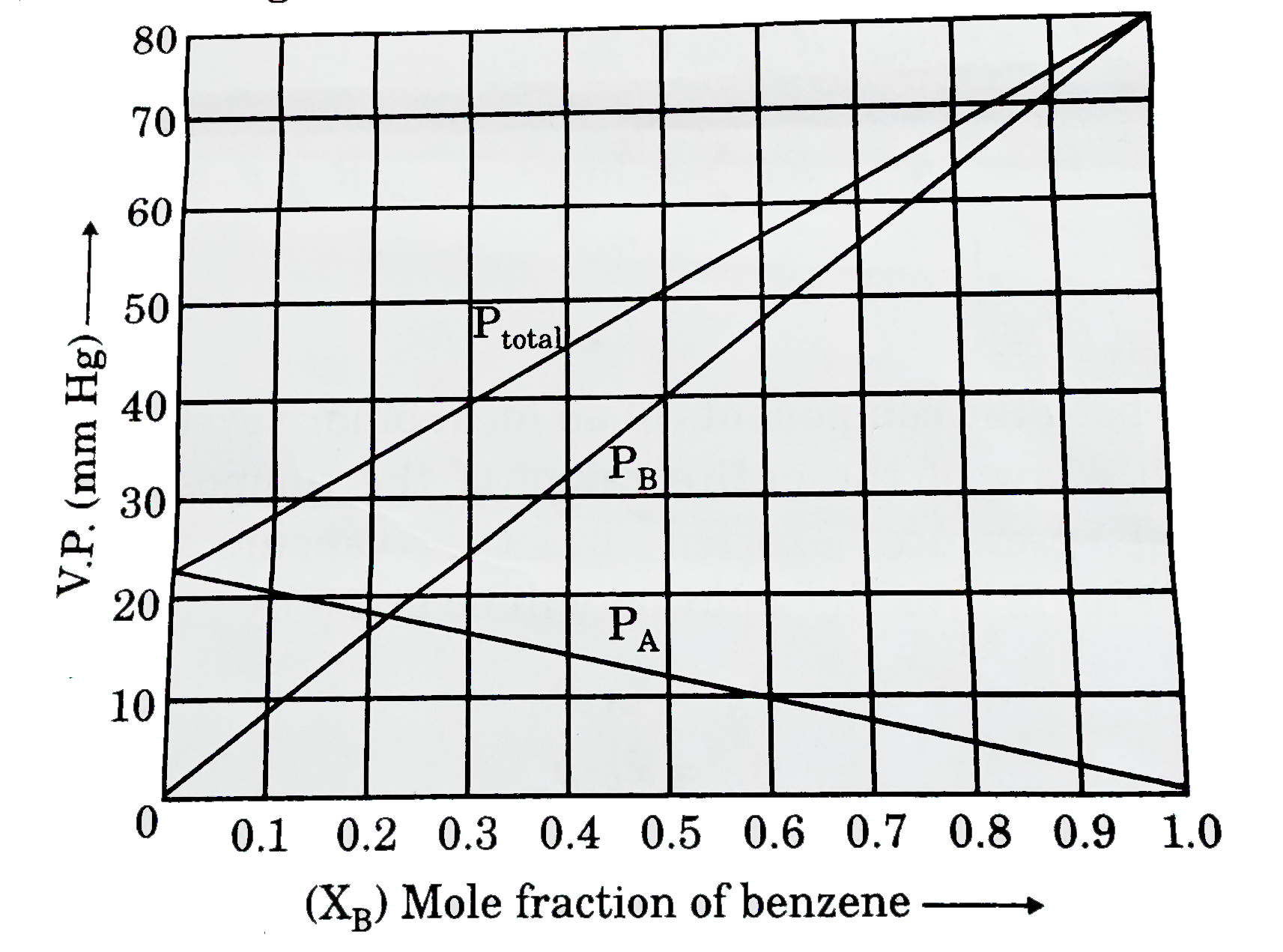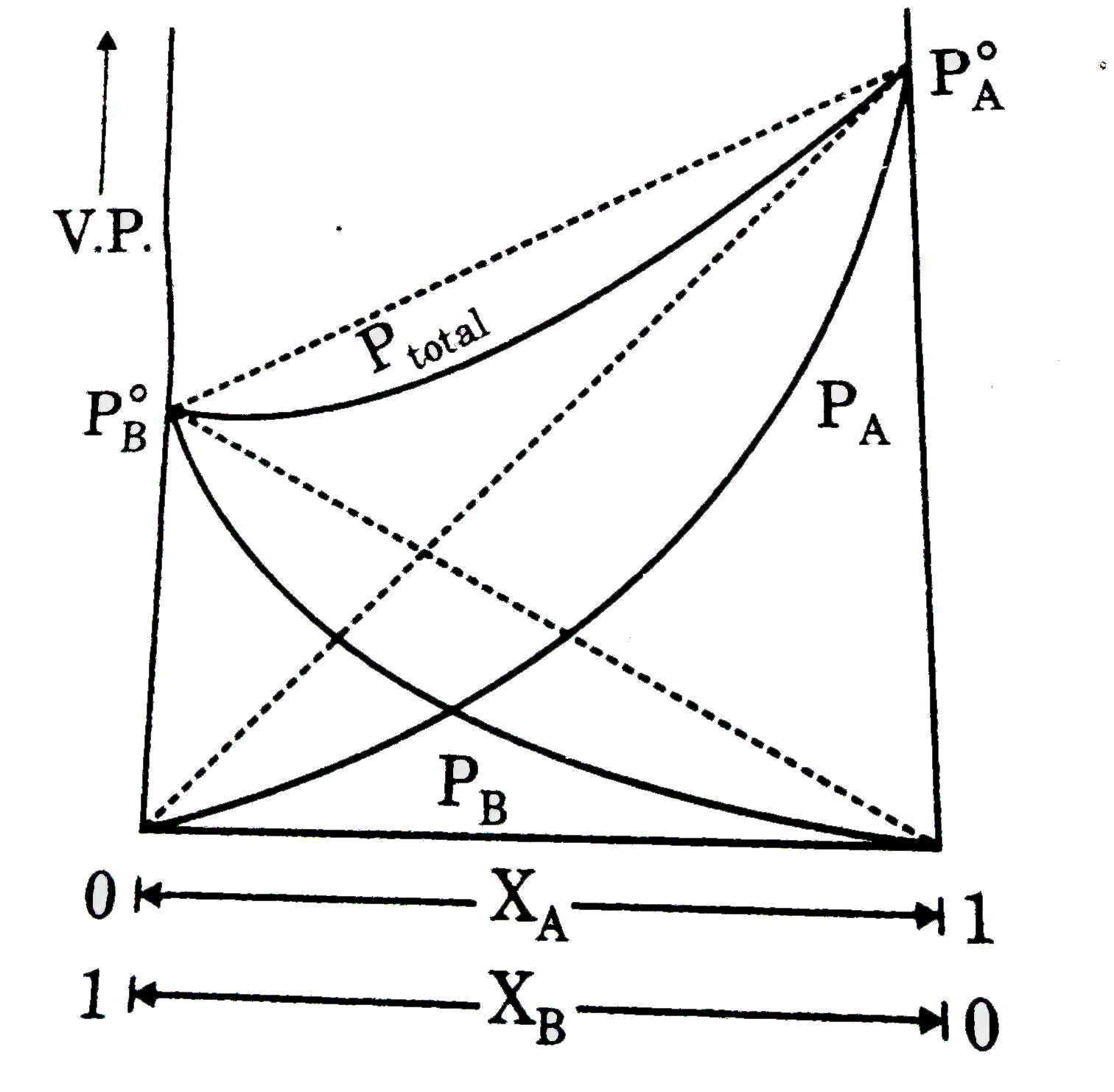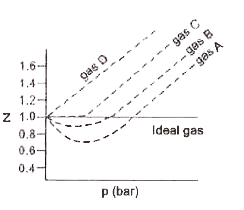Deviation From Ideal Behaviour
Step by step video & image solution for Deviation From Ideal Behaviour by Chemistry experts to help you in doubts & scoring excellent marks in Class 11 exams.
Updated on:21/07/2023Similar Questions
Knowledge Check
Assertion: Helium shows only positive deviations from ideal behaviour.
Reason: Helium is an inert gas.AIf both (A) and (R) are correct and (R) is the correct explanation of (A).BIf both (A) and (R) are correct, but (R) is not the correct explanation of (A).CIf (A) is correct, but (R) is incorrect.DIf (A) is incorrect, but (R) is correct.Answer the questions (given below) which are based on the following diagram. Vapour pressure plots of benzene-toluence mixture at 20∘C. Solution of benzene and toluence are ideal. Raoult's law is valid for both components over the entrie range of concentration.

There is deviation from ideal behaviour if mixture contains:An-hexane and n-heptaneBchlorobenzene and bromobenzeneCo-xylene and p-xyleneDacetone and chloroformAnswer the questions (given below) which are based on the following diagram: vapour pessure diagram for real solution of two liquids A and B that exhibit a negative deviation from Raoult's law. The vapour pressure of both A and B are less than predicted by Raoult's law. The dashed lines represent the plots for ideal solutions.

Solution containing components A and B show this type of deviation from ideal behaviour when:AAttractionA...BΔHmixΔVmixB.PLarger than average ofA...A.B..Battraction+ve+velarger than expectedBAttractionA...BΔHmixΔVmixB.PAs in(a)−ve−veAs in(a)CAttractionA...BΔHmixΔVmixB.PSmaller than average ofA...A..B..Battraction+ve+veSmaller than expectedDAttractionA...BΔHmixΔVmixB.PAs in(c)−ve−veAs in(c)
Column IColumn II(A) Carbon tetrachloride + Toluene(p) Shows positive deviation from ideal behaviour(B) Chloroform + Benzene(q) Shows negative deviation from ideal behaviour(C) Carbon tetrachloride + Chloroform (r) Mixing is endothermic (D) Benzene + Toluene(s) Shows ideal behaviour
View SolutionWhy do the gases at low temperature and high pressure show large deviations from ideal behaviour ?
View SolutionThe real gases show deviations from ideal gas behaviour. It is observed that real gases donot follow Boyle's law, Charles law and Avogadro law perfectly under all conditions. The deviations from ideal behaviour can be measured in terms of compressiblity factor Z.
what is meant by the term Compressiblity ? (b) What is the value of Compressibility factor for ideal gases and real gases ?
View SolutionDeviation of real gases from ideal behaviour can be studied by plots of compressibility factor (Z) vs p. The copressibility factor is
Z=pVnRT
The compressibility factor for 1 mole of a gas obeying van der Waals gas equation at 0∘C and 100 atm pressure is found to be 0.5. The van der Waals gas equation is
(pan2V2)(V−nb)=nRT
For gases like H2andHe, which show only positive deviation from ideal behaviour, the compressibility factor is greater than 1. Is the statement true or false?
View SolutionThe real gases show deviation from ideal gases donot follow Boyle's law, Charles law and Avogadro law perfectly under all conditions. The deviations from ideal behaviour can be measured in terms of compressibility factor, Z which may be defined as :
Z=pVnRT
It has been observed that Z has values greater than and less than one for different gases. The behaviour of some common gases is shown here.

If Vo is the observed volume of a gas and Vi is the ideal gas volume, then Z is
View Solution
